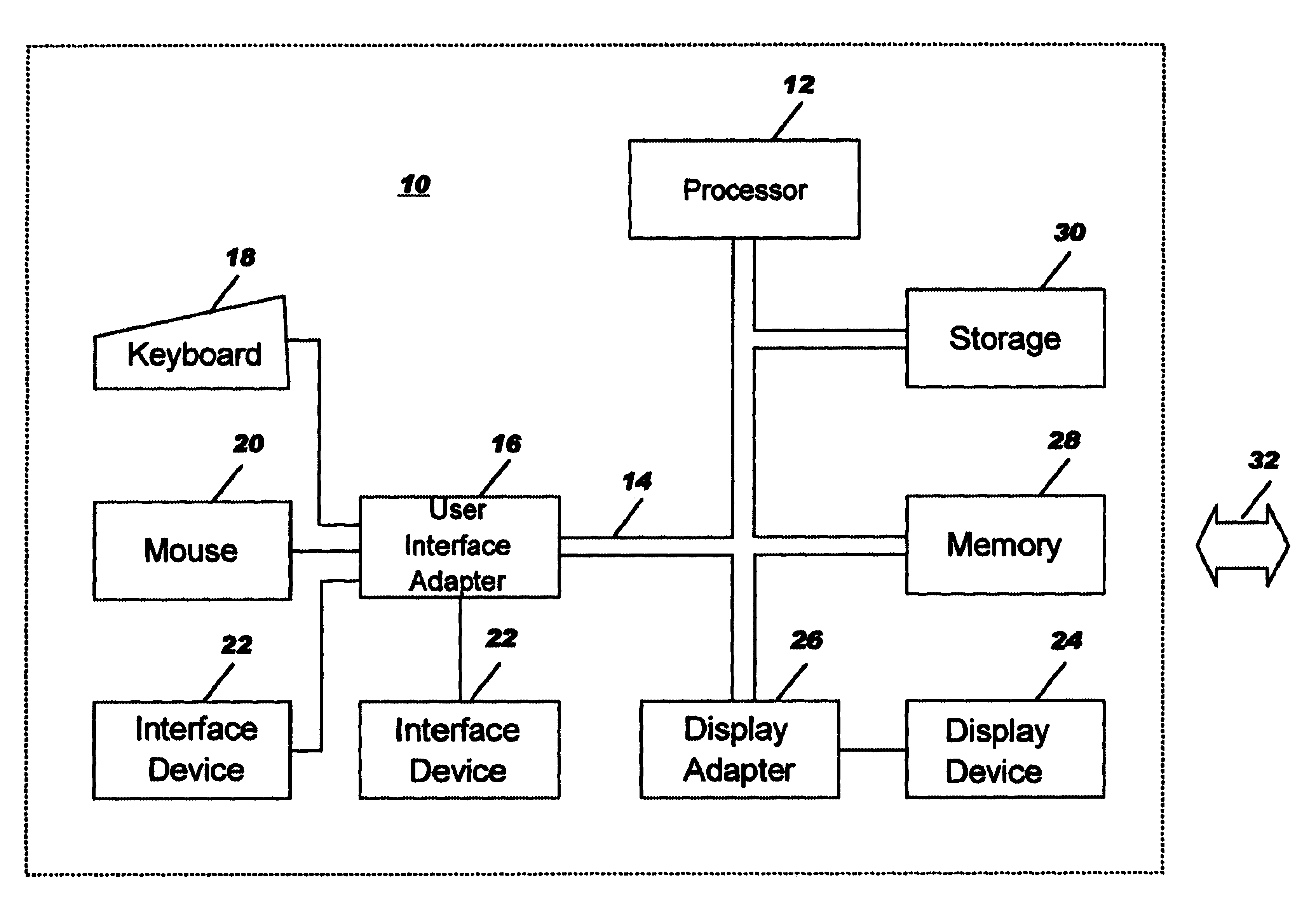Authentication method to enable servers using public key authentication to obtain user-delegated tickets
a technology of public key authentication and authentication method, applied in the computer system field, can solve the problems of unsuitable public key system does not provide a delegation model, and kerberos system alone is not appropriate for a public network environment such as the internet, and achieves unrealistic administrative burden in a public access environmen
- Summary
- Abstract
- Description
- Claims
- Application Information
AI Technical Summary
Problems solved by technology
Method used
Image
Examples
second preferred embodiment
In the second preferred embodiment, the initial handshake process between the client, server, and private key system is modified from that described above for the first preferred embodiment. Referring to FIG. 6, the client sends an initial request at 601, comprising a nonce (nonce1) and a request for the server's certificate. The server forwards or tunnels all the client information received from the client during the handshaking process on to the private key system as shown at 602. (That is, the handshake process occurs between the client and the server machine, but the complete contents of that handshake are also forwarded to the private key system.) The private key system now has the nonce1 (from the client), and the original request from the client. The private key system responds 603 by sending a signed nonce1, a nonce2, and the private key system's certificate (identified in FIG. 6 as the security certificate) to the server. The server then forwards 604 this information to the...
third preferred embodiment
In the third preferred embodiment, the client and server perform a normal SSL handshake without involving the private key system. The private key system is not involved until the server machine needs to acquire ticket(s) on behalf of the client to process the client's request.
As shown in FIG. 7, the client sends a nonce (nonce1) and a request for the server certificate 701 to the server machine. The server machine responds 702 with its server certificate, a signed nonce1, and its own nonce (nonce2). The client uses the signed nonce1 and server's certificate to authenticate the server machine, and responds 703 to the server machine with a signed nonce2 and the client's certificate. The server machine uses the signed nonce2 and client certificate to authenticate the client. When the client is successfully authenticated by the server machine, the server machine completes the handshake as shown at 704. The client then sends the data or service request at 705 to the server machine for pr...
fourth preferred embodiment
In the fourth embodiment, the private key system contains the logic to determine what tickets the server machine will need to complete the unit(s) of work required to fulfill the client's request for data or services by the server machine. This preferred embodiment is similar to the second preferred embodiment in that the SSL handshake is tunneled through the server machine, but the actual exchange of certificates and credentials is between the client and the private key system. Because the client receives the private key system's certificate (as in the second preferred embodiment), it can validate that it is dealing with a known and trusted entity, and one that has authority for all the units of work required to complete the request.
As shown in FIG. 8, the flows used for this fourth preferred embodiment begin at 801, where the client sends a nonce (nonce1) and a request for the server's certificate to the server machine. The server machine forwards 802 that request (i.e. tunnels it...
PUM
 Login to View More
Login to View More Abstract
Description
Claims
Application Information
 Login to View More
Login to View More - R&D
- Intellectual Property
- Life Sciences
- Materials
- Tech Scout
- Unparalleled Data Quality
- Higher Quality Content
- 60% Fewer Hallucinations
Browse by: Latest US Patents, China's latest patents, Technical Efficacy Thesaurus, Application Domain, Technology Topic, Popular Technical Reports.
© 2025 PatSnap. All rights reserved.Legal|Privacy policy|Modern Slavery Act Transparency Statement|Sitemap|About US| Contact US: help@patsnap.com



